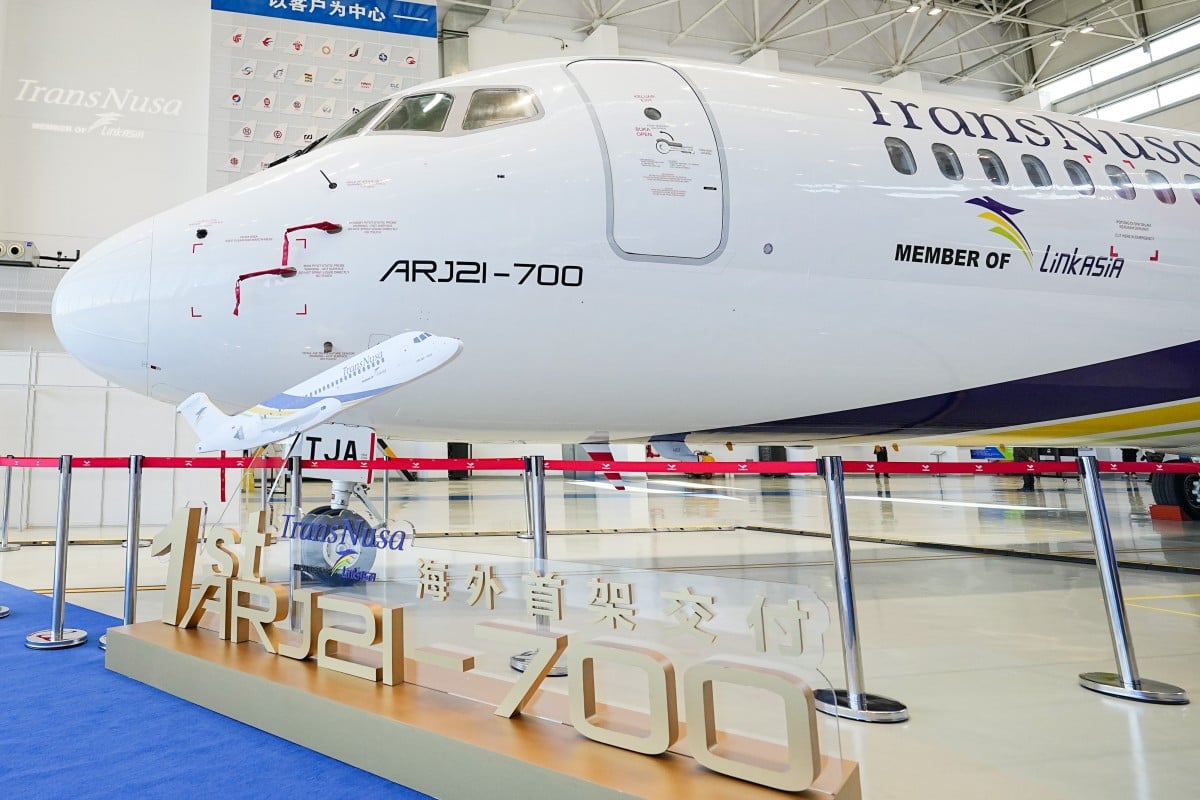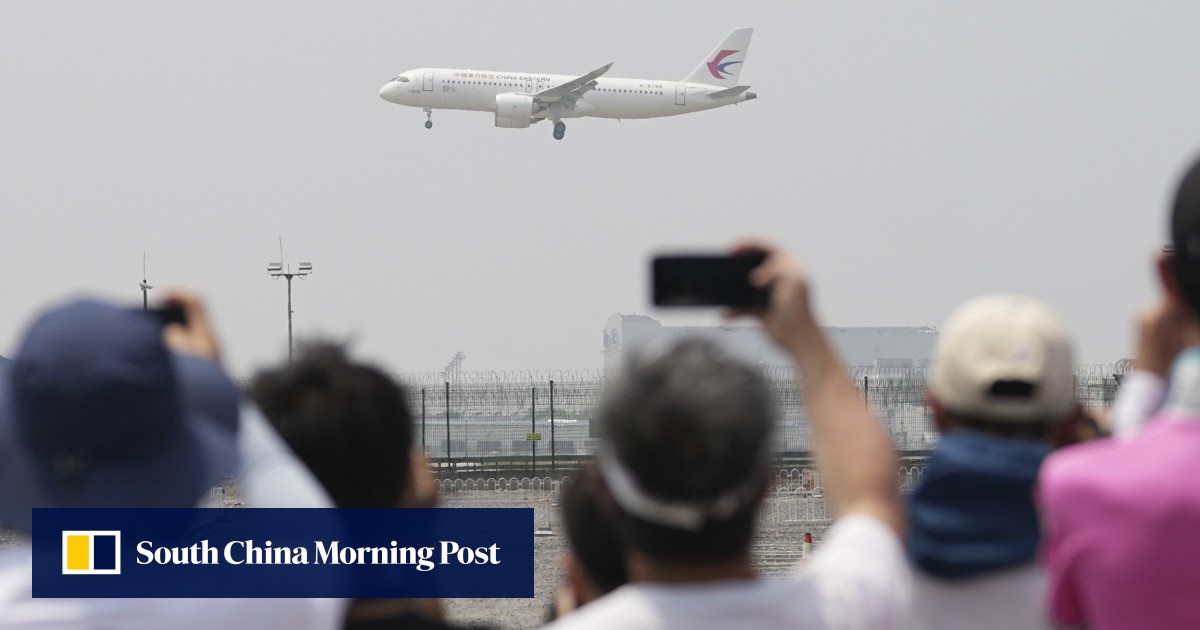beijingwalker
ELITE MEMBER

- Joined
- Nov 4, 2011
- Messages
- 65,191
- Reaction score
- -55
- Country
- Location
China’s home-grown planes touch down in Southeast Asia as West mulls approval
- US$2 billion agreement expands footprint of domestic models as certification winds its way through US, Europe
- Appropriations facilitated by state entities account for major portion of purchase ledgers
Published: 7:00pm, 21 Sep, 2023

China’s home-grown passenger jetliner - the ARJ21 - is delivered to Indonesian airline TransNusa on Dec 18, 2022, in the first sale of a Chinese-made regional jet to a foreign market. Photo: Xinhua
As it waits for the long process of certification to work its way out in wealthier markets, China has turned to a new client base – Southeast Asia – for its home-made passenger planes.
At the recently concluded China-Asean expo in Nanning, capital of the Guangxi Zhuang autonomous region, the state-owned Commercial Aircraft Corporation of China (Comac) signed a US$2 billion deal with Brunei’s Gallop Air to supply it with 30 aircraft.
The deal was announced on Monday by Tianju Group, a Shaanxi-based private enterprise with an ownership stake in the Brunei airline, but no details about delivery time or aircraft type were provided.
Comac did not reply to a request from the Post for comment on the state of its orders.
At the signing ceremony, the backdrop mentioned the ARJ21 – a mid-range Comac airliner that began development in 2002 – but an online statement also brought up the single-aisle C919, which could potentially compete with Boeing’s 737 and Airbus’ A320.
“Gallop Air will join hands with Comac’s domestically produced jets, the ARJ21 and C919, to build on Brunei’s soaring reputation for quality and branding in Asia and Oceania,” Tianju Group said in a statement.
The online version of Communist Party mouthpiece People’s Daily also cited potential cooperation in the development of China’s aviation sector.
“Comac is ready to further deepen cooperation with Guangxi enterprises … jointly expand the Asean market, and promote the standardisation work of civil aviation,” Comac chairman He Dongfeng was quoted as saying.
Why it took China’s home-grown C919 plane 15 years to start flying passengers
The first C919 was delivered in December 2022, with two planes sent to state-owned China Eastern Airlines for regular flights between the commercial hub of Shanghai and the southwestern metropolis of Chengdu. Those routes began commercial operations in May.
At the Pujiang Innovation Forum in Shanghai earlier this month, Comac chairman He said that 1,061 C919 planes had been ordered, and that the company’s ARJ21 airliner had carried 8.6 million total passengers, though no timetable was given on plane upgrades.
Most of the purchases are widely believed to have been made by state-owned airlines, financial leasing firms and China-controlled overseas entities – including those fulfilled as part of the expansion into Southeast Asian markets.
China delivered the ARJ21 to Indonesian low-cost airline TransNusa in 2022, its first major success in selling the country’s domestic jets overseas.
TransNusa has the backing of China Aircraft Leasing Company, which is partly owned by Everbright Group, a state-owned financial giant.
The certification process was also less rigorous than it would have been in other regions. Indonesia recognises China’s own certification without the extensive validation process required by the US Federal Aviation Administration and the European Union Aviation Safety Agency.
China has set up agreements with aviation regulators from several markets to accept certification from the Civil Aviation Administration of China as a suitable alternative to their own standards.

China’s C919 passenger jet completes maiden commercial flight from Shanghai to Beijing
China’s C919 passenger jet completes maiden commercial flight from Shanghai to Beijing
Memorandums of understanding validating China’s certification for its domestically produced aircraft were signed by Colombia in 2012 and Micronesia in 2014.
Both marquee planes are still being refined as their producer shops them outside the domestic market.
The aircraft maker has announced plans to further expand or downsize the C919’s existing 156-192 passenger range to 130-240 seats, and to incorporate new energy and artificial intelligence for further technological optimisation.
Comac is now conducting two-week demonstration flights of both the ARJ21 and C919 in west China’s Xinjiang Uygur autonomous region, according to its statement.
The flights are intended to better adapt the home-grown jets by servicing the region, the country’s largest and host to the most airports.

Deal signed at China-Asean expo broadens adoption of flagship aircraft
A Brunei airline has committed to buying a batch of China’s domestically produced aircraft – another step forward in the planes’ path to global procurement.









